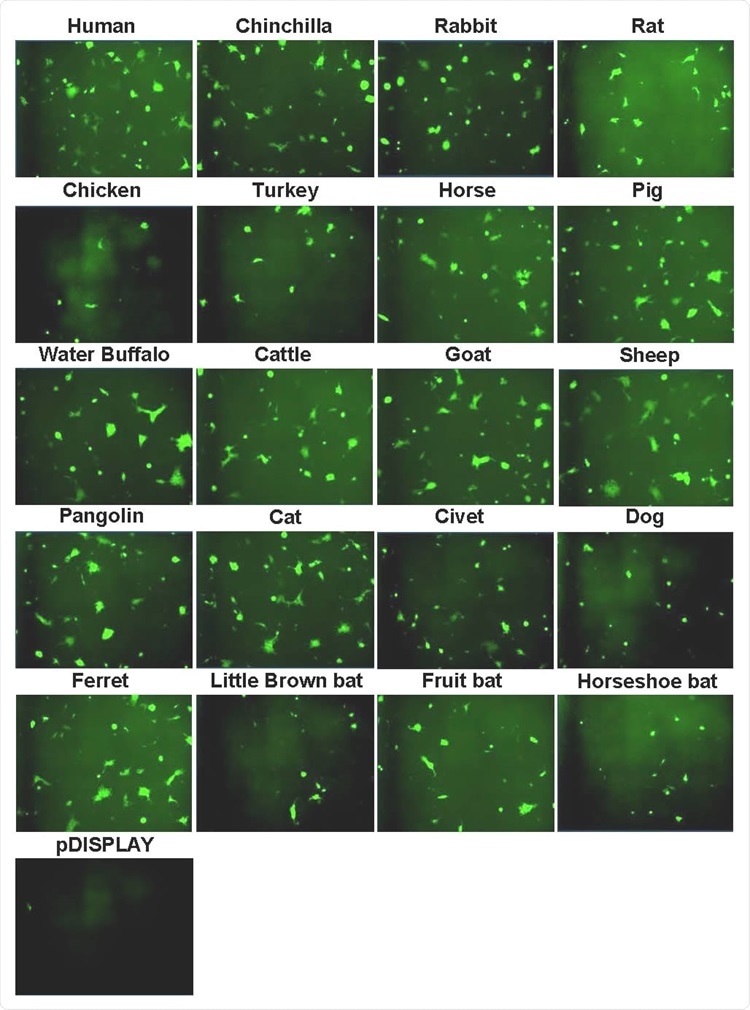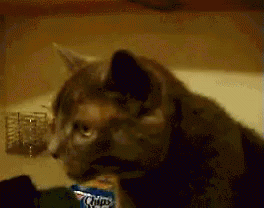
Posted on 07/28/2020 6:14:43 AM PDT by Red Badger
Cases of pet animals contracting the severe acute respiratory syndrome coronavirus 2 (SARS-CoV-2) have been reported since the coronavirus disease (COVID-19) first emerged. Now, a pet cat has become the first animal in Britain to test positive after contracting the virus from its owners.
The cat developed symptoms of shortness of breath. The pet owners took it to a veterinary clinic, where it was initially suspected to have feline herpesvirus, a common respiratory infection in cats.
A sample from the cat tested positive for SARS-CoV-2 as part of a research program at the University of Glasgow Center for Virus Research. This program aims to screen hundreds of samples for the presence of SARS-CoV-2 in the country’s cat population. The test was performed at the Animal and Plant Health Agency in Weybridge, Surrey, on July 22.
Reverse zoonosis
Health experts say that the case is the first known human to feline transmission of SARS-CoV-2 in the country, but this does not mean the infection is being spread to people by their pets.
Zoonosis is described as viral infections that jump from animals to humans, just like coronaviruses, which are mainly found in wild animals like bats, camels, and civet cats, among others. The severe acute respiratory syndrome (SARS) and the Middle East respiratory syndrome (MERS) were reported to have come from civet cats and camels. The current coronavirus pandemic has been claimed to come from pangolins, which contracted the infection from bats.
On the other hand, reverse zoonosis is when a virus first infects humans and then jumps to animals. Since the emergence of the novel coronavirus pandemic, reports of infections were reported in pet dogs in Hong Kong and even in a tiger in a zoo in the United States.
Spread from people to animals
The U.S. Centers for Disease Control and Prevention (CDC) says that it is still unknown where the current coronavirus disease came from but said it might have originally come from an animal, like a bat.
“At this time, there is no evidence that animals play a significant role in spreading the virus that causes COVID-19. Based on the limited information available to date, the risk of animals spreading COVID-19 to people is considered to be low,” the CDC said.
The health agency added that more studies are needed to shed light on how different animals could be affected by COVID-19. As scientists race to learn more about the virus, it appears that it can spread from people to animals in some situations.
“We are still learning about this virus, but it appears that it can spread from people to animals in some situations, especially after close contact with a person sick with COVID-19,” the CDC explained.
The CDC also explained that cats, dogs, and a few other types of animals could be infected with the novel coronavirus. However, it says that experts don’t know all of the animals that can be infected. Animals and COVID-19
Three previous studies have tackled the risk of animal infection with SARS-CoV-2. In a study by researchers in the United Kingdom, the novel coronavirus can infect a wide range of animal species, including dogs, cats, hamsters, rabbits, horses, goats, pigs, water buffalos, sheep, cattle, and pangolins. These animals showed higher levels of viral entry. Syncytia formation following SARS-CoV-2 Spike expression. Effector cells expressing half of a split luciferase-GFP reporter and SARS-CoV-2 Spike were mixed with target cells expressing ACE2 proteins from the indicated hosts and the corresponding half of the reporter (see Methods). A vector only control was also included (pDISPLAY). Representative micrographs of GFP-positive syncytia formed following co-culturing are shown. Images were captured using an Incucyte live cell imager (Sartorius).

Meanwhile, animals like turkey, chicken, and all bat species supported lower levels of viral entry than human angiotensin-converting enzyme 2 (ACE2).
Another study uploaded in BioRxiv has identified SARS-CoV-2 target cells in distinct tissues of cat, hamster, and pangolin. The most notable finding was that the SARS-CoV-2 target cells were the higher proportion of SARS-CoV-2 target cells in cats.
Lastly, scientists at the Chinese Academy of Agricultural Sciences, the Chinese Center for Disease Control and Prevention, said that SARS-CoV-2 was able to engage ACE2 receptors across a wide range of animal species, such as the horseshoe bat, domestic cat, dog, pig, goat, and Malayan pangolin.
‘Pangolins’. Is that what they now call the PLA people who work at the Level 4cbiolab in Wuhan? So much to learn about Mandarin Chinese!

Oh, yeah, the first cat to get it...again! All of those dead cats were the first to get it according to the birdbrains of contemporary journalism.
Well, it could be Schrodinger’s Cat...................
“Schrodinger’s Cat?” Oh, no! You got me to start thinking about that again. Had to take the runaway brain ramp to stop. ;D
Well, he has the virus and he doesn’t have the virus............
Is a cat catching a virus anything like catching a mouse? Maybe the virus catching cats can team up with the virus sniffing dogs.
Yes. :)
It’s interesting that a cat was actually tested and diagnosed.
Cats are natural Hypochondriacs!..............
Fauci padding his stats on the number of cases.
I wonder if testing a cat is anything like trying to give a cat a bath. ;-)
What a poorly written article. All this science folderol, but nothing about the fate of the cat who caught COVID from its owners. Is it OK? After all, that WAS the headline.
Feline Lives Matter!..................
That's right! A darn sight more than most of these anarchists trying to destroy our country.
Housecat flu!!!
Cat Catch Fever...................
I didn’t think about that. Maybe they use a tranquilizer first. Imagine trying to stick a swab way up a cat’s nostril.
Disclaimer: Opinions posted on Free Republic are those of the individual posters and do not necessarily represent the opinion of Free Republic or its management. All materials posted herein are protected by copyright law and the exemption for fair use of copyrighted works.